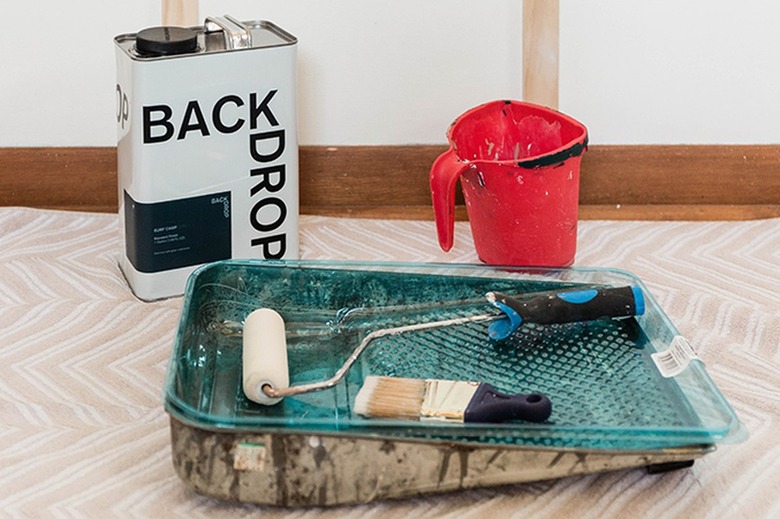The Best Kind Of Paint To Use On Concrete
As mediums for painting go, concrete is not one of the better ones. It transfers moisture from the ground or surrounding dirt, and it breathes and sucks up paint like a kid with a soda. Concrete requires special paints that contain binders that contract and expand right along with the surface. Do not use oil-based or acrylic house paints on concrete or you'll just have to paint it all over again, because acrylic paints peel, crack and just can't take the abuse that concrete patios, sidewalks and driveways undergo.
Masonry Paints
Masonry Paints
Paint intended for masonry or bricks also works on concrete. Called elastomeric wall coating or paint, it includes binders that allow the paint to expand and contract with concrete as it warms and cools. Allocate the time necessary to paint concrete, because it takes about week when you include muriatic acid cleaning, old paint stripping, sealing and priming — all which need to happen before you even begin to paint the concrete.
Two-Stage Epoxy Floor Coverings
Two-Stage Epoxy Floor Coverings
If you want an extra-strong paint for garage floors, workshops, driveways or even a basement surface, opt for a two-part epoxy floor paint. These paints sometimes include colorful aggregate bits you can spread onto the wet paint that add color and depth to the finished surface. Superstores and home-improvement stores offer kits for painting the garage floor, which usually have enough paint to cover a 200- to 250-square-foot area.
After mixing the paint by adding the catalyst — in the same way you use resin — you must use all the paint because after it hardens, it won't be spreadable. Let it dry for up to 24 hours before walking on it, and three days before driving your car on it.
Epoxy Terrazzo Options
Epoxy Terrazzo Options
As a decorative flooring option for an interior or exterior concrete floor, an epoxy terrazzo coating creates a mosaic-like floor that includes small pieces of granite or marble embedded into the epoxy coating. After the surface dries, a floor polisher shines it up.
Epoxy terrazzo coatings are typically 1/4- to 3/8-inch-thick compared with traditional terrazzo, which is 2 to 3 inches thick. The newer epoxy terrazzo also include color options and multiple types of aggregates such as synthetic materials, mother of pearl or recycled glass. With artistic use of these epoxy terrazzo products, you can create geometric shapes and designs, logos, artistic renderings and contrasting borders.
One-Step Sealing and Priming
One-Step Sealing and Priming
You don't need to seal and prime separately when you use a primer that also seals concrete. Remove any concrete-curing compounds, oil and grease from the concrete, because these interfere with primer or paint adhesion. If you just plan to add a two-part epoxy coating, you don't need to prime or seal the concrete; just ensure the concrete is thoroughly clean first.
Concrete Color Stains
Concrete Color Stains
A colorful concrete stain looks and works very well for an outdoor concrete patio. There are water-based concrete stains that become the permanent surface color of the concrete, and there are also acid-based stains that react with the concrete itself to change the color.
Application of water-based concrete stains requires fewer steps than acid stains. and you usually have more color options to choose from. To keep color from fading, add a sealant to the water-based stain after it dries.
